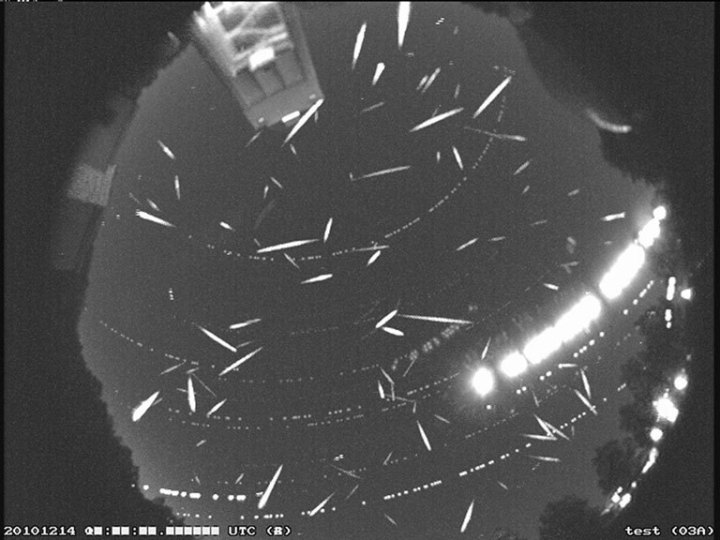This week will see the peak of one of the year’s best meteors showers, the Geminids. This yearly event happens when Earth passes through a cloud of debris left behind by an asteroid called 3200 Phaethon. As this asteroid makes its orbit around the sun every 1.4 years, it leaves behind a trail of dust and rock particles that intersects with Earth’s orbit. When our planet passes through this debris trail, the particles of rock burn up in Earth’s atmosphere and result in a shower of meteors or, as they are colloquially known, shooting stars.
Meteor showers are fun astronomical events to observe even for newbies as they don’t require any special equipment and can be seen with the naked eye. We’ve got details below on how to watch the meteor shower in person. If you don’t fancy braving the cold, there’s also a livestream where you can observe the sight from the cozy confines of home.

The Geminids are typically a very bright shower, and at the shower’s peak. you can see up to 150 meteors per hour. The shower is visible through most of the month of December, from December 4 to 20, but the peak is on the evening of 14-15 December. So this Thursday night is the ideal time to try to catch the shower, which is a favorite among amateur astronomers.
“Although the Perseids, which arrive every August, are better known, the Geminids usually put on a better show,” said Diana Hannikainen of Sky & Telescope. “Just make sure to bundle up!”
Another fun feature about the Geminids is that the meteors come in different colors, with yellow, green, and even red and blue meteors visible among the more common white ones. These colors come from the different trace metals that are found in the asteroid remnants.
“Most meteors appear to be colorless or white, however, the Geminids appear with a greenish hue,” said Bill Cooke, lead for the Meteoroid Environment Office at NASA’s Marshall Space Flight Center. “They’re pretty meteors!”
To get the best view of the shower, head out after dark and try to get far away from light sources like cities. Avoid looking at your phone or other bright lights to help your eyes adjust to the darkness, and lie back in a reclining chair like a deck chair to look up at the sky. Don’t forget to wrap up warm as it’ll be cold, but as long as there aren’t too many clouds, you should be able to see meteors every few minutes.
Alternatively, if you can’t face the cold or if it’s too cloudy or bright where you are, you can also watch this livestream of the view from the Subaru Telescope on Mauna Kea in Hawai’i, letting you enjoy the show without the cold!
Editors' Recommendations
- How to safely watch April’s total solar eclipse, in person or online
- How to watch SpaceX launch the third flight of its Starship rocket on Thursday
- How to watch SpaceX Crew-7 return to Earth this week
- How to watch SpaceX Crew-8 launch to the space station tonight
- How to watch NASA and SpaceX launch a private lunar lander mission this week




